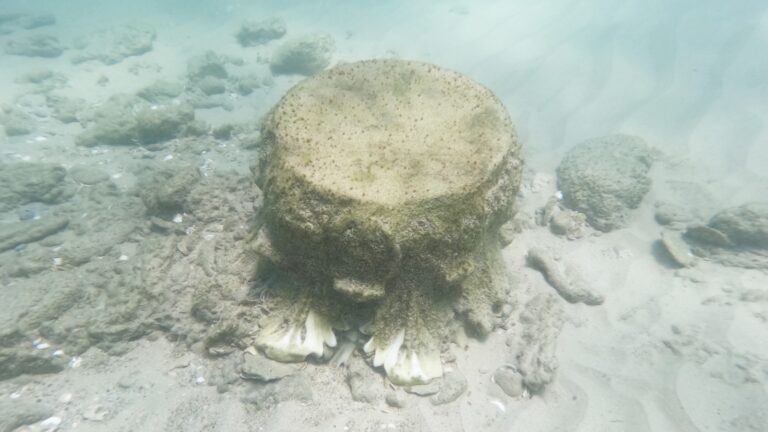A few weeks ago, an Israeli man contacted the Israel Antiquities Authority to report seeing ancient columns while diving in the Mediterranean Sea at Beit Yannai Beach north of Netanya.
His tip led to the discovery of a rare ancient shipwrecked cargo, the first of its kind found in the Eastern Mediterranean.
The precious cargo, weighing about 44 tons, includes 1,800-year-old Corinthian capitals adorned with vegetal patterns, partially carved capitals, and pure marble columns up to 6 meters long.

The IAA said these valuable Roman architectural elements apparently were intended to adorn a magnificently elaborate public building such as a temple or theater.
“We have been aware of the existence of this shipwrecked cargo for a long time,” said Koby Sharvit, director of the IAA’s underwater archeology unit, “but we didn’t know its exact whereabouts as it was covered over by sand, and we could therefore could not investigate it.”
He surmises that recent storms must have exposed the cargo. “Thanks to Gideon’s important report, we have been able to register its location, and carry out preliminary investigations, which will lead to a more in-depth research project.”

Since the marble cargo came from the Aegean or Black Sea region in Turkey or Greece, and was discovered south of the port of Caesarea, it was probably destined for one of the ports along the southern Levantine coast –Ashkelon or Gaza, or possibly even Alexandria in Egypt.
The discovery settles a running debate about whether the Romans imported architectural elements from their lands of origin or transported them in a partially carved form for finishing at their destination.
“The find of this cargo resolves the debated issue, as it is evident that the architectural elements left the quarry site as basic raw material or partially worked artifacts and that they were fashioned and finished on the construction site, either by local artists and artisans or by artists who were brought to the site from other countries,” Sharvit said.
Fighting for Israel's truth
We cover what makes life in Israel so special — it's people. A non-profit organization, ISRAEL21c's team of journalists are committed to telling stories that humanize Israelis and show their positive impact on our world. You can bring these stories to life by making a donation of $6/month.









